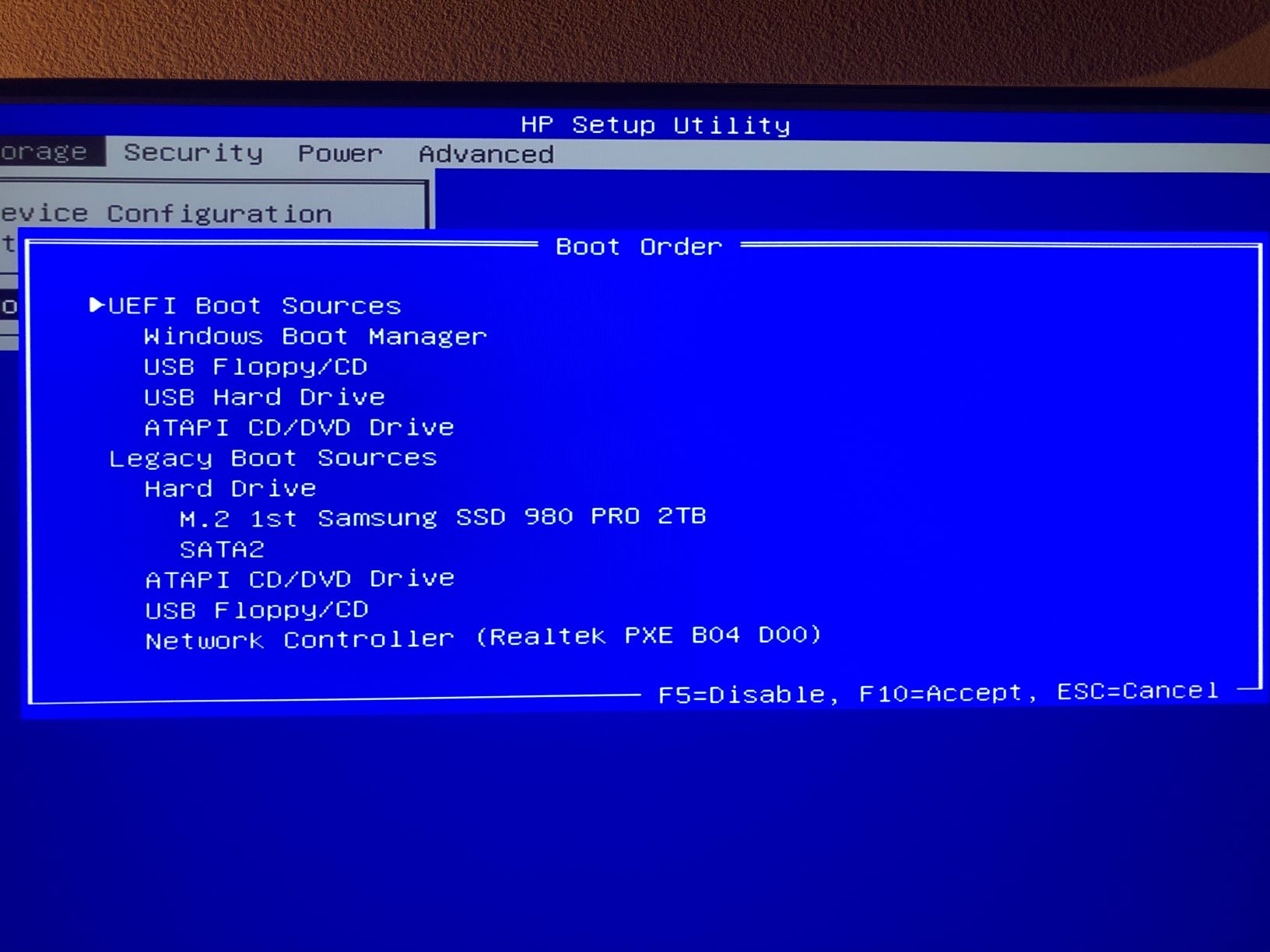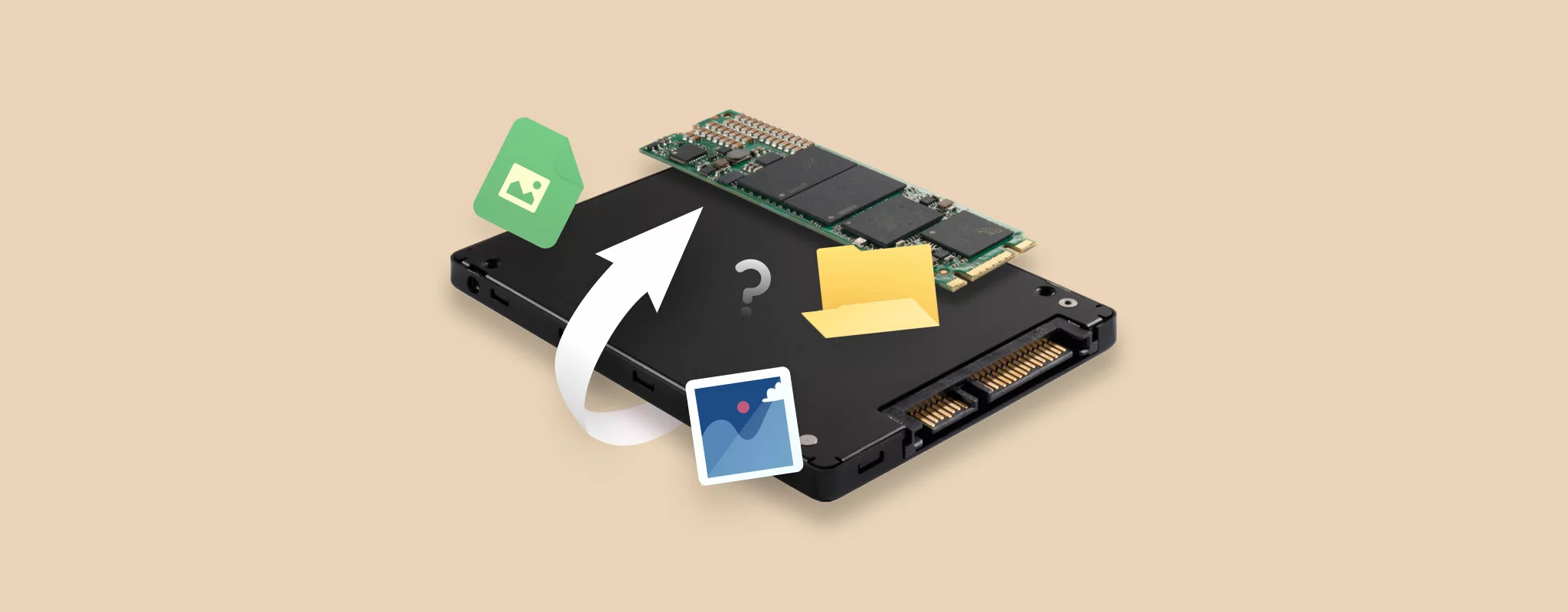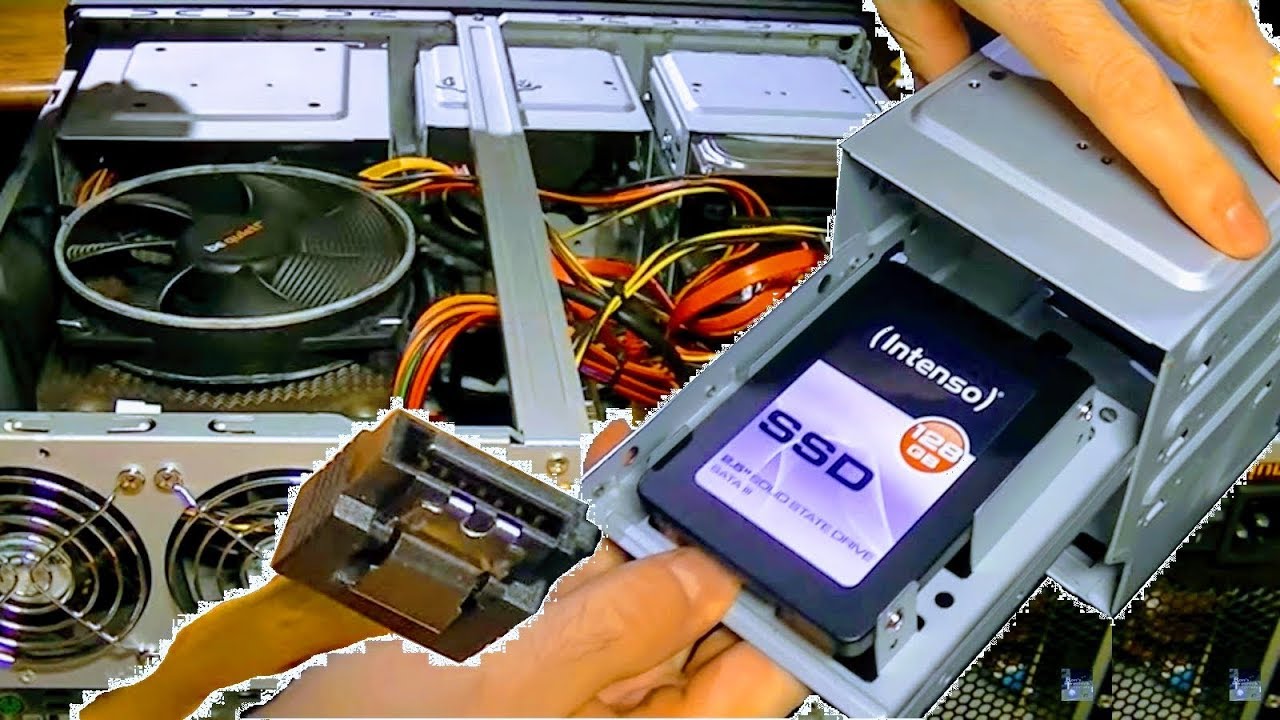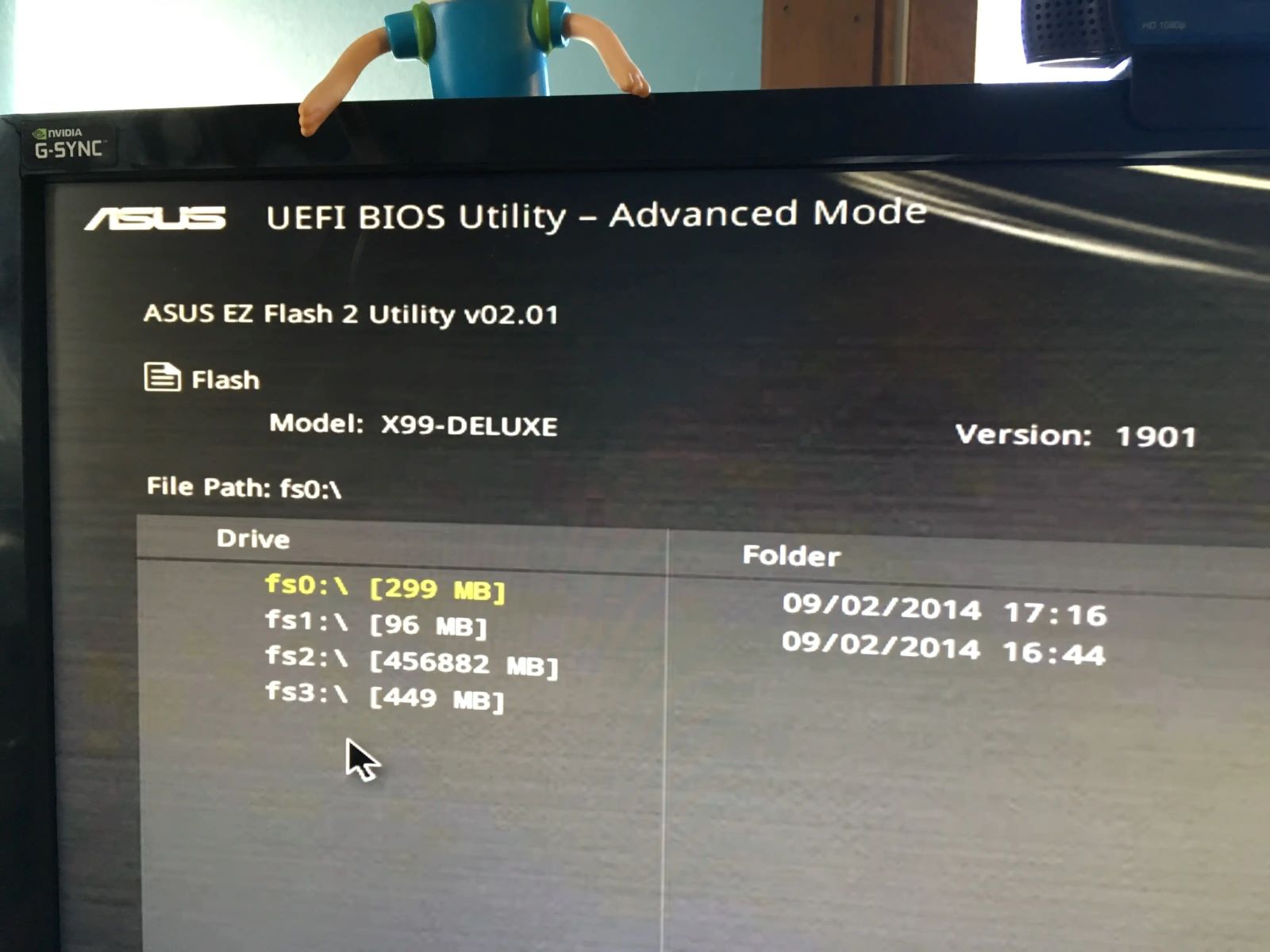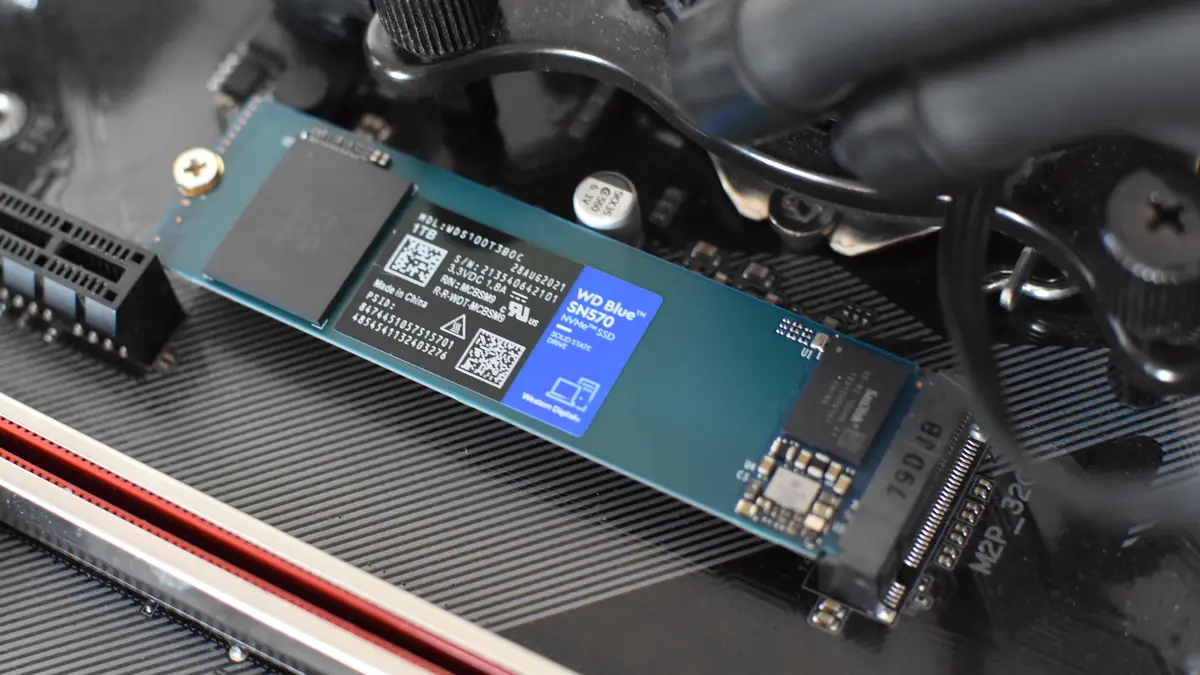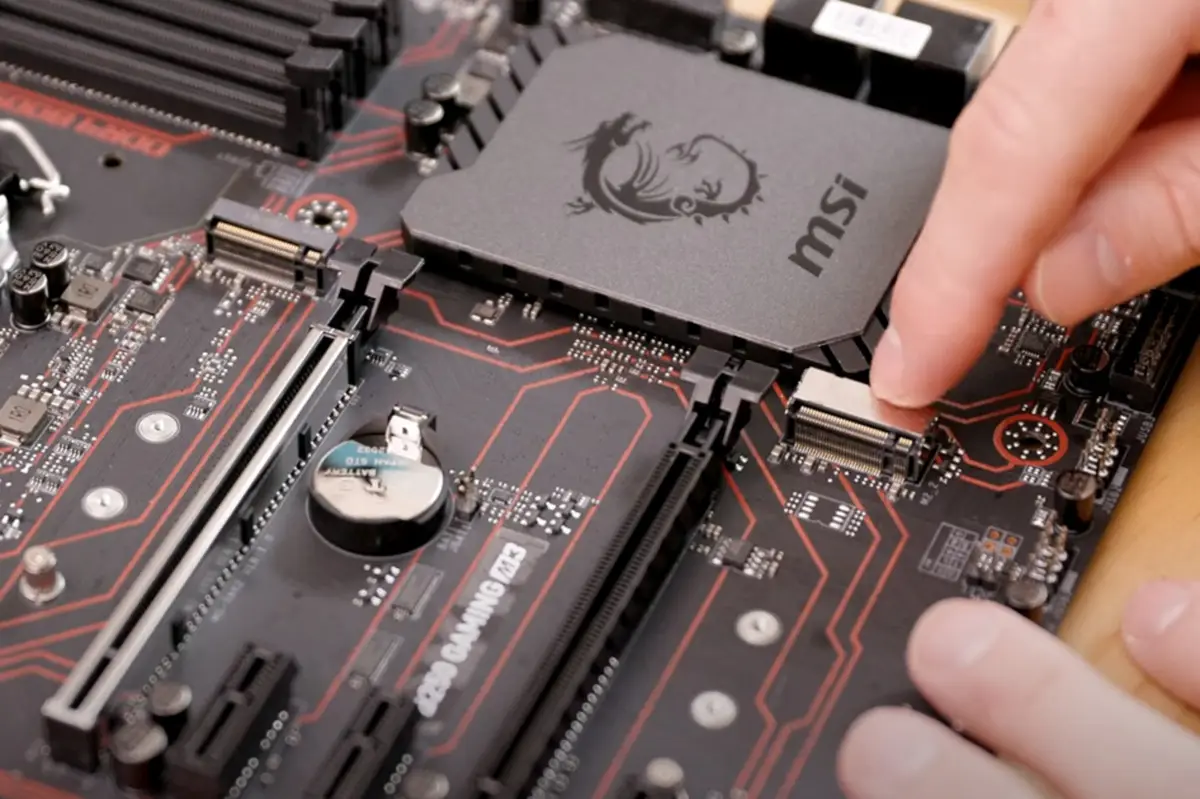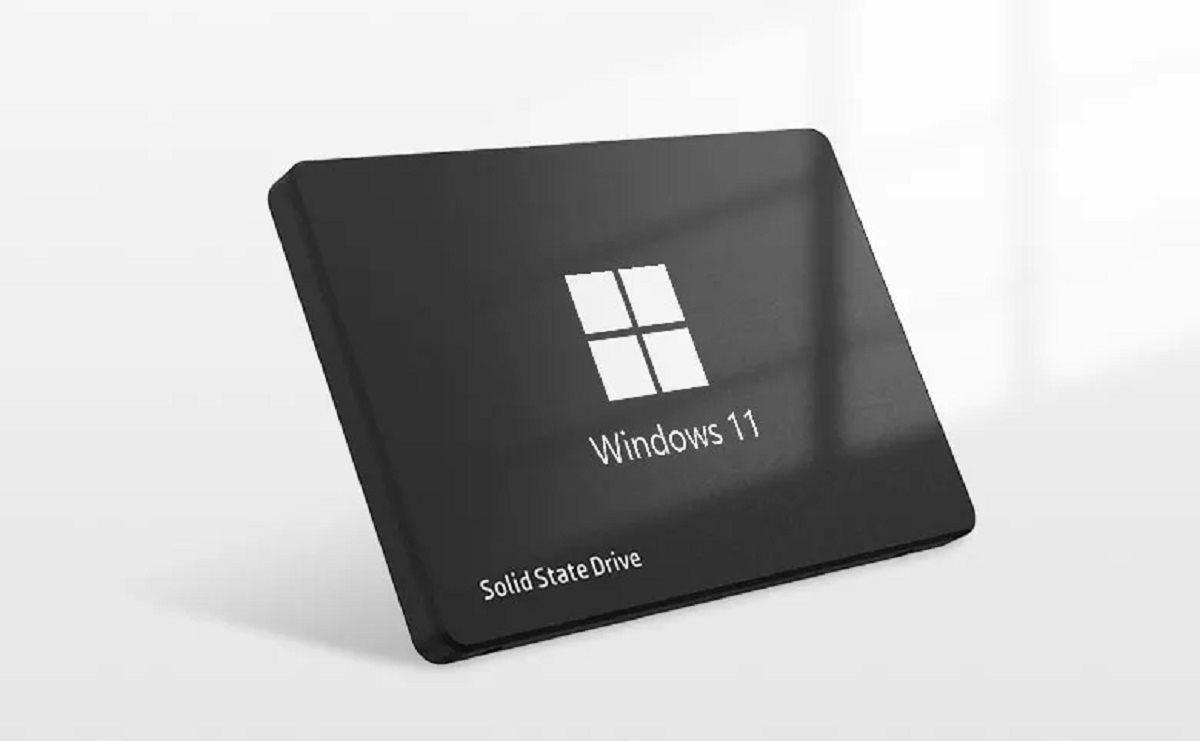Introduction
When it comes to understanding the intricacies of computer systems, terms like BIOS (Basic Input/Output System) and Windows Boot Manager often come up. While many people may have heard of these terms before, they may not fully grasp their meaning or importance in the world of computing.
The BIOS is a fundamental component of any computer system, serving as the bridge between the hardware and the software. It is responsible for initializing and configuring hardware components during the boot process. On the other hand, the Windows Boot Manager is a software component that manages the boot process and allows the user to choose the operating system they want to use on their computer.
Understanding the basics of BIOS and Windows Boot Manager is crucial, as it can help users troubleshoot issues, configure their boot settings, and ensure the smooth functioning of their computer system. In this article, we will delve deeper into these concepts, exploring their significance and how they work together to enable the successful booting of a computer.
We will also discuss how to access the Windows Boot Manager in the BIOS, how to configure it according to your preferences, and some troubleshooting tips for common issues that may arise. By the end of this article, you will have a comprehensive understanding of the BIOS and Windows Boot Manager and be equipped with the knowledge to make informed decisions about your computer’s boot process.
What is BIOS?
The BIOS, short for Basic Input/Output System, is a critical component of a computer’s startup process. It is a firmware embedded in the computer’s motherboard that acts as a communication interface between the hardware and the operating system. The BIOS initializes and configures the computer’s hardware components, ensuring they function correctly before handing control over to the operating system.
During the boot process, which occurs when you power on your computer, the BIOS performs a series of checks and tasks. It conducts a Power-On Self-Test (POST) to check if all hardware components are present and functioning properly. It also identifies and initializes devices such as the hard drive, DVD drive, graphics card, and memory modules.
Moreover, the BIOS stores vital system settings, such as the date and time, boot sequence, and hardware configuration, in a special area called the CMOS (Complementary Metal-Oxide-Semiconductor) memory. These settings can be accessed and modified through a simple interface provided by the BIOS setup utility.
Over the years, the BIOS has evolved to keep up with technological advancements. Originally, it used a text-based interface, but modern BIOS versions often provide a graphical user interface (GUI) for easier navigation and configuration.
It’s worth noting that with the emergence of newer technologies, such as Unified Extensible Firmware Interface (UEFI), some computers no longer use traditional BIOS but rather utilize UEFI firmware as the primary boot process. However, for the sake of simplicity, we will refer to both BIOS and UEFI as BIOS in this article.
In summary, the BIOS is a fundamental part of a computer system, responsible for initializing and configuring hardware components during the boot process. Its functions include conducting a Power-On Self-Test, identifying and initializing devices, and storing essential system settings. Understanding the BIOS is essential for troubleshooting hardware issues, adjusting system settings, and ensuring the proper functioning of your computer.
What is Windows Boot Manager?
The Windows Boot Manager, also known as the Boot Manager, is a software component that plays a crucial role in the boot process of a computer system. It is responsible for managing and presenting options for selecting the operating system to boot from when a computer starts up.
Windows Boot Manager is a part of the Windows operating system and is typically located in the system’s boot partition. It is designed to work with multiple operating systems, allowing users to choose which one they want to use. For example, if you have both Windows 10 and Linux installed on your computer, the Boot Manager will present a menu during startup, giving you the option to select the desired operating system to launch.
One notable feature of the Windows Boot Manager is its ability to handle dual-boot configurations, where two or more operating systems are installed on the same computer. It keeps track of the installed operating systems and their corresponding boot files, making it possible to switch between them seamlessly.
The Boot Manager uses a configuration file called the Boot Configuration Data (BCD) store, which contains information about the installed operating systems, boot options, and boot sequence. The BCD store is located in the system’s EFI partition (for UEFI-based systems) or the system partition (for legacy BIOS systems) and is accessed by the Boot Manager during the boot process.
Windows Boot Manager also provides a user-friendly interface where you can configure various boot options, such as the default operating system, timeout duration, and recovery options. This allows users to customize their boot experience according to their preferences.
In summary, the Windows Boot Manager is a software component that manages the boot process of a computer system. It presents options for selecting the operating system to boot from, supports dual-boot configurations, and uses the Boot Configuration Data (BCD) store to store boot-related information. Understanding the Windows Boot Manager is essential for managing multiple operating systems on a single computer and customizing the boot process to suit your needs.
Why is Windows Boot Manager important?
The Windows Boot Manager plays a vital role in the operation of a computer system, and its importance cannot be overstated. Here are a few key reasons why the Windows Boot Manager is essential:
- Operating System Selection: One of the primary functions of the Windows Boot Manager is to provide a menu during startup, allowing users to select the operating system they want to use. This is particularly useful in scenarios where multiple operating systems, such as different versions of Windows or Linux distributions, are installed on the same computer. The Boot Manager simplifies the process of switching between operating systems, making it convenient for users to access the system that best suits their needs.
- Dual-Boot Configurations: Windows Boot Manager is crucial for managing dual-boot configurations. When two or more operating systems are installed on a computer, the Boot Manager keeps track of the installed operating systems and their corresponding boot files. This enables seamless switching between different operating systems, providing users with the flexibility to run multiple operating systems on a single computer without conflicts.
- Customizability: The Boot Manager allows users to customize various boot options, giving them control over their boot experience. Users can set a default operating system to load automatically if no choice is made within a specified timeout. Additionally, the Boot Manager provides options for advanced startup and recovery, giving users the ability to troubleshoot issues and access recovery tools when necessary.
- Boot Sequence Management: Windows Boot Manager enables users to manage the boot sequence of the operating systems installed on their computer. By modifying the boot order, users can specify the order in which the installed operating systems are launched. This is beneficial when one operating system is preferred over others or when troubleshooting boot-related issues.
- Overall System Stability: The Windows Boot Manager helps ensure the stability and smooth operation of a computer system. By managing the boot process and providing a controlled environment for selecting and launching operating systems, the Boot Manager minimizes the risk of system errors and conflicts. It ensures that the appropriate boot files and configurations are used, preventing potential issues that could arise from incorrect or inconsistent boot sequences.
In summary, the Windows Boot Manager is important because it allows users to select and manage multiple operating systems, facilitates dual-boot configurations, offers customizability options, enables boot sequence management, and contributes to overall system stability. By efficiently managing the boot process, the Boot Manager enhances the user experience and ensures the proper functioning of a computer system with various operating systems installed.
How does Windows Boot Manager work?
The Windows Boot Manager serves as a critical component in the boot process of a computer system. It works in conjunction with the system firmware (BIOS or UEFI) and the operating system to ensure a smooth and successful startup. Here is a breakdown of how the Windows Boot Manager operates:
- Powering on the System: When a computer is powered on, the system firmware (BIOS or UEFI) performs a Power-On Self-Test (POST) to check the hardware components’ integrity. Once the hardware is deemed functional, the system firmware initializes and executes the code stored in the boot device’s Master Boot Record (MBR) or EFI system partition.
- Loading the Windows Boot Manager: The boot code in the MBR or EFI system partition locates and loads the Windows Boot Manager, which is typically stored in a specific location on the boot device. The Boot Manager is responsible for managing the boot process and presenting a menu of operating systems available for selection.
- Presenting the Boot Menu: The Windows Boot Manager displays the boot menu, allowing the user to choose the operating system they wish to load. The menu presents the different operating systems installed on the computer, including different versions of Windows or other operating systems like Linux.
- Launching the Selected Operating System: Once the user selects an operating system from the boot menu, the Windows Boot Manager accesses the Boot Configuration Data (BCD) store. The BCD store contains information about the installed operating systems and their corresponding boot files.
- Handing Control to the Operating System Loader: The Windows Boot Manager transfers the control to the operating system loader associated with the selected operating system. This loader, such as NTLDR for legacy BIOS systems or winload.exe for UEFI systems, is responsible for loading the core components of the chosen operating system into memory.
- Operating System Initialization: The operating system loader initializes the operating system, bringing it into a functional state. The operating system then takes over and continues the boot process by executing its startup routines, loading device drivers, and launching essential system processes.
In summary, the Windows Boot Manager works by loading the boot menu, presenting the user with options to select the desired operating system. Once a selection is made, the Boot Manager accesses the Boot Configuration Data (BCD) store, transfers control to the operating system loader, and initiates the loading and initialization of the chosen operating system. By efficiently managing this process, the Windows Boot Manager ensures a seamless and successful startup of the computer system.
How to access Windows Boot Manager in BIOS
Accessing the Windows Boot Manager in the BIOS is a relatively straightforward process. However, please note that the exact steps may vary depending on the computer’s manufacturer and the version of the BIOS firmware. Here is a general guideline on how to access the Windows Boot Manager in the BIOS:
- Restart your computer: Begin by restarting your computer. You can do this by clicking on the “Start” menu, selecting “Power,” and choosing the “Restart” option.
- Access BIOS settings: As the computer starts up, there is usually a specific key or combination of keys that you need to press to access the BIOS settings. Frequently used keys include Del, F2, F10, or Esc. Look for on-screen prompts or consult your computer’s manual to determine the correct key(s) to access the BIOS settings.
- Navigate to the Boot tab: Once you enter the BIOS settings, navigate to the “Boot” tab. The location and appearance of the Boot tab may vary depending on the BIOS version and manufacturer.
- Configure boot settings: In the Boot tab, you will find options to configure the boot order and choose the default operating system. Use the arrow keys or the specified navigation keys to move between options.
- Locate the Windows Boot Manager: Look for an option related to the Windows Boot Manager. It may be labeled “Boot Manager,” “Boot Options,” or something similar. Select that option to access further settings related to the Boot Manager.
- Save and exit: After making any necessary changes to the Windows Boot Manager settings, save your changes and exit the BIOS settings. Typically, this can be done by pressing the F10 key or selecting the appropriate option from the menu.
It’s important to note that not all BIOS interfaces are the same, and the options and menus may differ between manufacturers. Consult your computer’s manual or the manufacturer’s website for specific instructions tailored to your device.
By accessing the Windows Boot Manager in the BIOS, you can configure the boot order, choose the default operating system, and make other relevant settings related to the boot process. This allows you to customize your computer’s startup behavior and ensure the smooth and efficient loading of the desired operating system.
How to configure Windows Boot Manager
Configuring the Windows Boot Manager allows you to customize the boot process and make changes to the boot settings. This can be useful if you want to prioritize certain operating systems, adjust timeout settings, or enable advanced startup options. Here are the general steps to configure the Windows Boot Manager:
- Access the Windows Boot Manager settings: First, access the Windows Boot Manager settings by following the steps outlined in the previous section on how to access it in the BIOS.
- Select the default operating system: In the Boot Manager settings, you will find an option to set the default operating system. Use the arrow keys to select the desired operating system from the list. This option determines which operating system will load automatically if no selection is made within a specified timeout period.
- Adjust the timeout duration: The Boot Manager also allows you to set a timeout duration, which determines how long the boot menu remains on the screen before the default operating system is automatically selected. Use the provided options to specify the desired timeout duration.
- Customize advanced boot options: Some Boot Manager settings provide additional options, such as accessing advanced boot options or recovery tools. These options can be helpful in troubleshooting and repairing your computer. Explore the available options and enable or disable as needed.
- Save the changes: Once you have made the desired changes to the Boot Manager settings, save your changes and exit the menu. The specific key or option to save and exit may vary depending on your computer’s BIOS interface.
- Verify the changes: Restart your computer to verify that the changes to the Windows Boot Manager settings were applied. During the startup process, check if the default operating system is selected automatically or if the boot menu appears with the configured timeout duration.
It’s important to note that the steps provided here are general guidelines, and the actual steps may vary depending on the BIOS version and computer manufacturer. Refer to your computer’s manual or the manufacturer’s website for specific instructions tailored to your device.
Configuring the Windows Boot Manager enables you to personalize the boot process, prioritize operating systems, and access advanced boot options. By customizing these settings, you can enhance the efficiency and convenience of your computer’s startup, ensuring a smooth and tailored experience.
Troubleshooting Windows Boot Manager
The Windows Boot Manager is a complex component that can sometimes encounter issues preventing the successful booting of the computer system. Troubleshooting these issues requires some understanding of the underlying causes and the appropriate steps to resolve them. Here are some common problems and their troubleshooting solutions related to the Windows Boot Manager.
- Operating System not Appearing in the Boot Menu: If one of the installed operating systems is not showing up in the boot menu, there may be a problem with the Boot Configuration Data (BCD) store. You can repair the BCD by using the Windows installation media to access the recovery environment and running the appropriate repair commands (such as bootrec or bcdboot) in the command prompt.
- Boot Menu Timeout Issue: If the boot menu disappears too quickly or does not appear at all, you can adjust the timeout setting in the Windows Boot Manager settings. Access the Boot Manager settings in the BIOS and set a longer timeout duration to ensure the menu stays displayed long enough to make a selection.
- Error Messages during Boot: If you encounter error messages during the boot process, such as “Error loading operating system” or “Missing operating system,” it may indicate a problem with the boot files or the system’s boot configuration. Running the bootrec command in the Windows recovery environment or using system repair tools can help repair these issues.
- Incorrect Default Operating System: If the wrong operating system is set as the default in the Windows Boot Manager, you can change it by accessing the Boot Manager settings in the BIOS. Select the desired default operating system from the list to ensure it loads automatically during startup.
- Boot Order Issues: If the computer does not boot from the desired device or partition, you may need to adjust the boot order in the BIOS settings. Ensure that the device or partition containing the desired operating system is set as the primary boot device.
It’s important to note that these troubleshooting solutions are general guidelines, and the specific steps may vary depending on the computer’s BIOS version and manufacturer. Refer to your computer’s manual or the manufacturer’s website for detailed instructions specific to your device.
Troubleshooting Windows Boot Manager issues requires a systematic approach and may involve repairing the boot configuration, adjusting settings, or running recovery tools. By following these troubleshooting steps, you can resolve common problems and ensure the smooth and successful booting of your computer system.
Conclusion
Understanding the Windows Boot Manager and its role in the boot process is crucial for managing and customizing the startup of your computer system. The Boot Manager, coupled with the BIOS or UEFI firmware, allows you to select the operating system to boot from, configure boot settings, and troubleshoot issues that may arise during startup.
In this article, we explored the basics of the BIOS, which serves as the bridge between hardware and software, initializing and configuring the computer’s hardware components. We also discussed the Windows Boot Manager, a software component that manages the boot process and presents options for selecting the operating system to load.
We highlighted the importance of the Windows Boot Manager, such as its ability to handle dual-boot configurations and its role in system stability. We also explained how the Boot Manager works in conjunction with the system firmware and the operating system loader to ensure a seamless startup.
Additionally, we provided instructions on accessing the Windows Boot Manager in the BIOS and configuring various boot settings, including setting the default operating system and adjusting timeout durations. We also touched on troubleshooting common issues related to the Boot Manager, such as missing operating systems or incorrect boot order.
While the specific steps and options may vary depending on your computer’s manufacturer and BIOS version, these guidelines serve as a starting point for managing and troubleshooting the Windows Boot Manager.
By understanding and effectively utilizing the Windows Boot Manager, you can tailor the boot process to meet your needs, enabling a smoother and more personalized experience. Whether you’re a power user with multiple operating systems or simply want to adjust boot settings, the Windows Boot Manager provides the necessary tools for you to optimize your computer’s startup.







